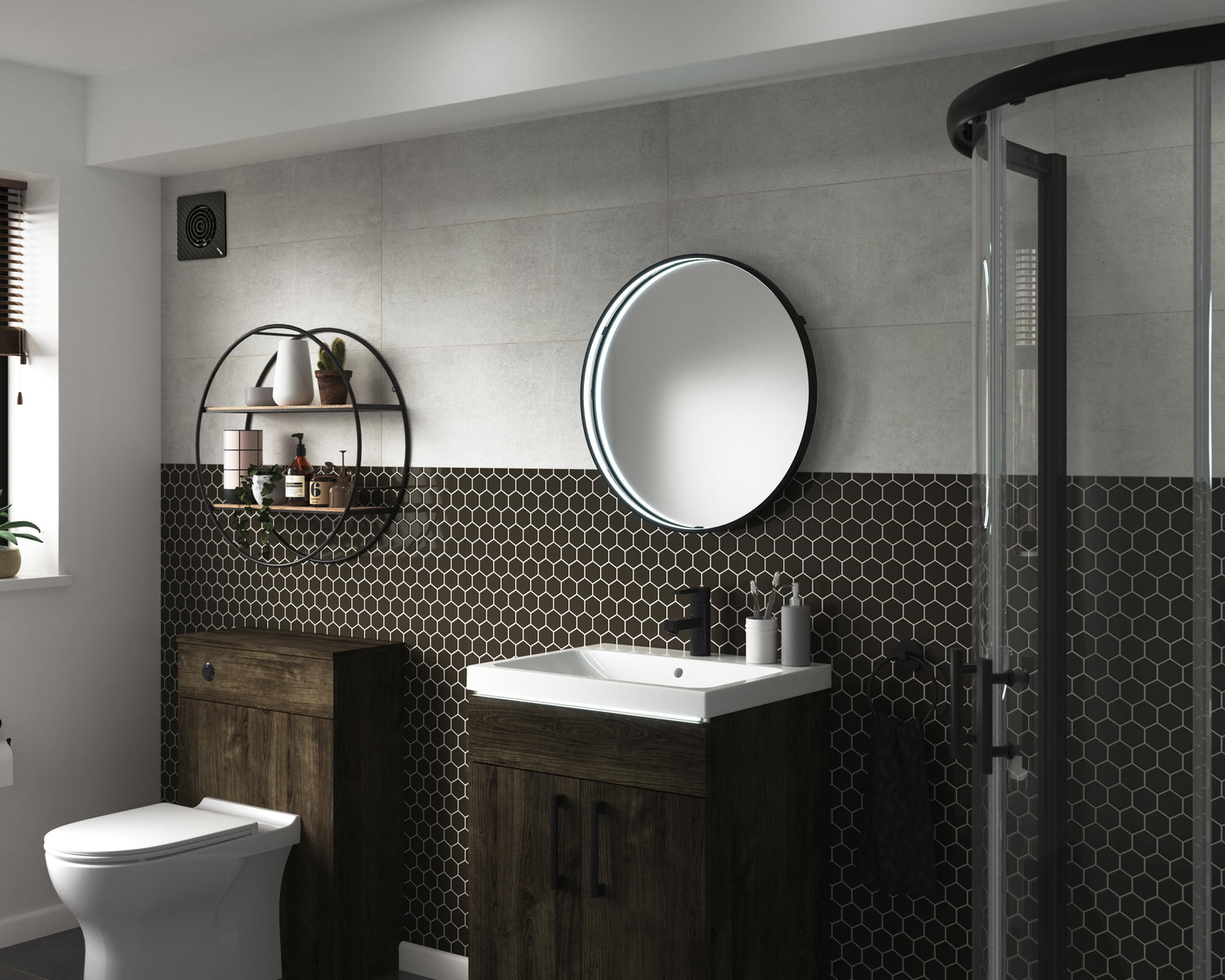Bathrooms are notorious for being humid places causing damp and black mould, which can be difficult to deal with. The key to preventing this is through proper ventilation in your bathroom and throughout your home.
The correct bathroom ventilation reduces the build-up of humidity and condensation. This can prevent the build-up of mould and mildew which can when left unintended can cause health problems. The NHS indicates that an excessive build-up of mould can lead to respiratory problems such as asthma and allergic reactions such as developing skin conditions. Proper bathroom ventilation increases the longevity of your bathroom from plastering to your bathroom accessories.
Our complete guide to bathroom ventilation will explain in full detail everything you need to know ensuring you choose the right product to suit your needs. Simply click on the links to jump to the relevant section.
- Why do you need ventilation in the bathroom?
- What type of ventilation fan do I need?
- How to choose the right size extractor fan?
- How loud will the extractor fan be?
- What features should I look out for?
- Where to install an extractor fan?
Why do you need ventilation in the bathroom? 
The UK regulations have outlined how much ventilation your bathroom needs in this document The Building Regulations Document F.
The main takeaway from this document is that any UK bathroom needs to have a source of ventilation, either being from an openable window or extractor fan. New build properties with both a bath and shower are required to use an extractor fan because of naturally lower ventilation due to the property being more airtight. The ventilation requirements for a bathroom are 15 litres per second/ 54m3 per hour. Meaning how fast old air is replaced with new air. All our fans here at Sensio meet these requirements.
What type of ventilation fan do I need? 
There are many different types of bathroom extractor fans out on the market. Sensio has chosen the best for your simplicity.
Axial Fans These fans are the type of fan that will come to mind for most people when talking about ventilation or extractor fans. They are traditionally fitted into the wall or ceiling and are ducted either straight through or for a short distance to an external wall. On the market these are the quietest and have number of features such as a timer, humidistat, varying levels of power, and finishes.
In-Line Fans These fans are ducted through a loft space or ceiling cavity and out via a soffit or external wall. These fans are usually powerful meaning they are louder than axial fans. They can be ducted over longer distances usually up to 10m, but they do require space to run the ducting. In line fans are especially useful for bathrooms without exterior walls. The ducting should be insulated if it runs through an unheated loft space to ensure that condensation does not build up in the ducting. An internal backdraft shutter can also be fitted in the ducting to ensure external drafts do not travel up the ducting from outside.
The ‘duct run’ or ‘ducting is a hose like connector which connects the internal fan shifting the air from inside the bathroom to the exterior of a property.
How to choose the right size extractor fan? 
Majority of our extractor fans at Sensio have a panel size of 150x150mm and spigot diameter of 100mm.
The airflow of a fan determines its suitability for the space in which it will be fitted. Some fans have more than one speed setting and will move more air depending on the setting chosen. In order to know what size bathroom extractor fan you need, refer to the cm3 (cubic metres squared) measurement of your fan.
It is recommended that fans should be able to change the air in a bathroom 4 times per hour. To calculate whether the fan you have selected is capable of achieving this, first calculate the volume of the room by calculating the heigh x width x length of the room in m3. Multiply this by 4.
For example, an en-suite measuring 2m by 2m and 2.2m high is 8.8m3. Multiplied by 4 is 35.2m3/h – you should select a fan that can achieve this figure at a minimum. It is a general rule of thumb to get a fan with more power than your minimum requirement to provide optimum airflow.
How loud will the extractor fan be? 
Typical measurements for sound come in dB measurements. Our bathroom extractor fans range from 30db-45db at a distance of 3 meters with the average axial extractor fan ranging from 35-45dB and more powerful fans ranging between 40-55dB. The decibel scale (dB) is not linear and is measured by the pressure of sound not volume. The difference between 20-30dB is less in volume than the different between 30-40dB. Our quietest mirror runs at 30db and can be in comparison to leaves rustling or a whisper. Take a look at our average decibel chart and compare this to your extractor fan choice.
What features should I look out for?

There are some features to consider when making your bathroom ventilation decisions.
Simple On/Off operation Fans that operate with a simple on/off switch are connected directly to a wall switch. They can be switched separately to the light or with the light.
Timer Fans with a timer can be set to run on after the fan or light is switched off at the wall. This means that humid air from a bathroom will continue to be extracted after someone has left the room. These timers can sometimes be adjusted to run for a longer or shorter time as desired.
Humidistat The fan will usually turn on with the light switch but fans with a humidistat detects high humidity in the room and will trigger the fan to start automatically regardless of whether the fan is switched on at the wall. This is useful in bathroom areas where the bathroom might remain humid for a period after the light is switched off.
Where to install an extractor fan?
Bathroom are considered wet zones which highlights how close you water and electrical supply are in proximity to each other. Products are then tested for water ingress and electrical safety and given an IP rating.
The IP rating is related back to a zone in the bathroom for which it is safe to be fitted. The diagram below shows how the zones work in practice;

All Sensio extractor fans are IP45, IPX4 and IPX2 rated.
The location of your extractor fan needs to be as close as possible to the source of the steam but as far away as possible from the source of replacement air. Meaning the vent fan needs to be in the bathroom interior, not in a hallway, and should be located close to the shower, tub, or shower/tub combination, as this is the area that produces the most moisture. The duct leading from the vent should be as straight as possible to avoid sharp bends that can impede airflow.




